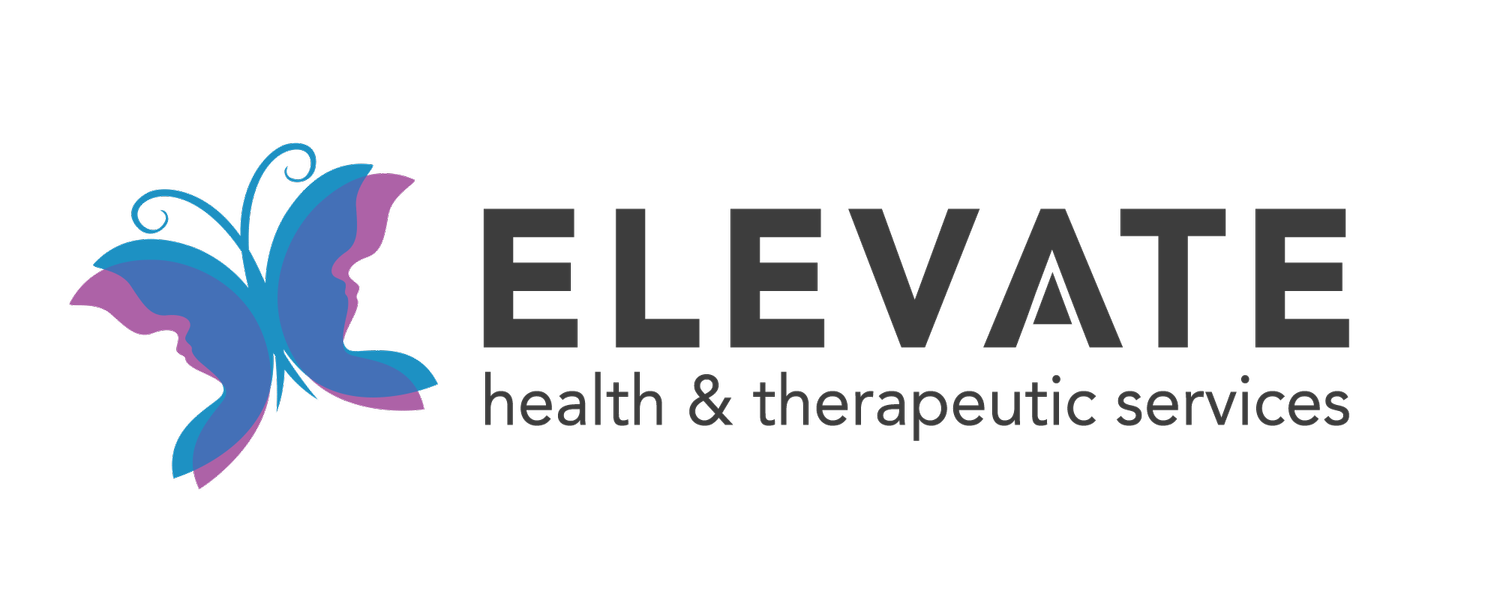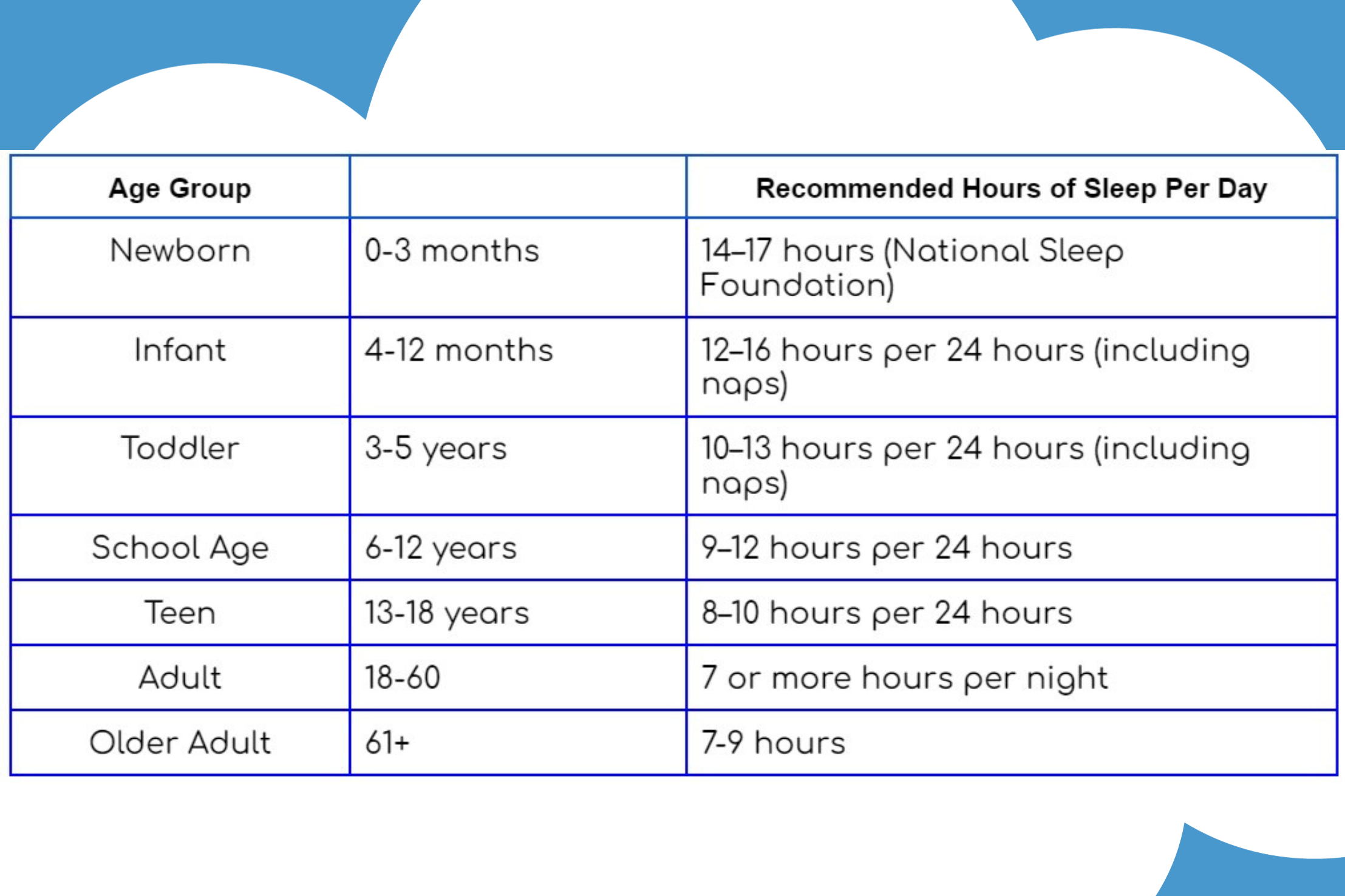Sleep Hygiene for Children and Families
Did you know that Sleep is an Occupation?
The American Occupational Therapy Association classifies sleep and activities relating to sleep and rest as an occupation that supports active engagement in other daily occupations. This means that occupational therapists can assist clients and their families with education and support to achieve a better night’s rest. After all, sleep may be one of the most important occupations we participate in on a daily basis. Sleep improves our immune function, reduces stress, lowers the risk of disease and major health problems, helps us maintain a healthy weight, and keeps our neurological processes running smoothly. Without sleep, our brains literally can not function. Sleep is when our brains commit information to memory so we can learn and create new neural connections.
At Elevate Health and Therapeutic Services, one topic parents continually have questions about is sleep. Is my child getting enough sleep? How can I help my child sleep better? Why isn’t my child sleeping!? to name a few. Because we love our families and want everyone to get a good night's sleep, parents included.
One of our fabulous occupational therapists put together 10 tips to help evaluate you and your family’s sleep habits, or what is sometimes referred to as sleep hygiene.
Before we get to our tips we would like to ask you one very important question. Are you getting enough sleep? Check out the chart below which can also be found on the CDC website.
10 Tips to Help Your Family Catch Some Zzzzs
1. No blue light before bed. Blue light should be avoided 2-3 hours before bedtime. You may be thinking this one is easy if your child doesn’t have a cell phone, but this applies to all screens including phones, tablets, TVs, and computers. A 2020 Harvard study found that blue light exposure suppresses Melatonin, interrupts your circadian rhythms, and may be linked to a variety of diseases including diabetes and heart disease.
Try: engaging in non-electronic activities before bed such as reading, taking a walk, coloring, or playing a game. If your child needs to be on a computer to complete homework try using blue light glasses to reduce exposure.
2. Ditch the nightlight. Many studies have found that any form of artificial light at night can mix up your brain’s sleep and awake signals. Even when your eyes are closed your brain can still detect light because your eyelids do not block 100% of light.
Try: using blackout curtains to block any artificial light coming from outside. If your child likes having a nightlight try using a dim red light which is less disruptive to sleep, mounting a push light next to their bed, or setting a light on a timer to turn off 30 minutes after they fall asleep.
3. Keep a consistent bedtime. Go to bed at the same time every night and wake up at the same time every morning. This includes weekends. Your brain has a built-in clock a.k.a your circadian rhythm. Sticking to consistent sleep and awake times helps keep your circadian rhythms regular so your brain will naturally prepare your body for sleep.
4. Establish a relaxing bedtime routine. Create a calming bedtime routine and stick to it. Routines only become routines if they are consistent. If caregivers alternate helping with bedtime make sure the routine is communicated and enforced. A routine may include taking a bath, brushing teeth, putting on pajamas, reading a story, and/or singing a song.
Try: If your household has difficulty with routines make it fun for you and your child. Try making a bedtime checklist they can check off and posting it by their bed, or a bathroom checklist that includes bathing, brushing hair, and brushing teeth.
5. No caffeine, sugar, or large meals before bed. Once consumed caffeine remains in the body for up to 6 hours. Don’t forget caffeine isn’t just in coffee and soda. It can be found in chocolate, candy, and tea. It’s best to avoid sugary treats and large meals 2-3 hours before bed in order to allow your body to properly digest and prepare for sleep.
Try: If your child needs a snack before bed keep it small and sugar-free. Don’t forget many juices and teas contain sugar and caffeine. Opt for water, flavored water, and herbal or fruit teas sweetened with stevia to avoid sugar.
6. Daily physical activity. According to the Sleep Foundation engaging in physical activity during the day helps decrease the amount of time it takes your body to fall asleep.
Try: A great time to fit in physical activity is after school. It will help your child get their energy out and take a brain break before homework and evening activities.
7. Spend time outside. Exposure to daylight helps regulate your sleep cycle. Studies show that 1-2 hours of daylight improves sleep quality and reduces anxiety.
Try: If you can’t get your child outside as often as you would like, try eating meals or snacks outside if the weather permits, allow sunlight to come through the windows of your home, and do work or homework in a room lit by natural light with artificial lights turned off.
8. Avoid late-day naps. The Sleep Foundation recommends avoiding naps after 3 p.m., late-day naps can be disruptive to your natural sleep cycle.
Try: If your child enjoys napping after school try spending time outside instead and giving them a healthy snack to increase their energy after school. Try gradually moving up their bedtime to make up for no longer napping.
9. Create a relaxing sleep environment. Keeping the thermostat between 60-67 degrees is ideal for sleep. Create a relaxing environment by avoiding clutter, playing calming music, and adding dimmable lights. Diffusing lavender oil can also be calming. If trying essential oils be sure to use 100% therapeutic-grade oils.
10. Only use the bed for sleeping. Using a bed for homework, play, or other activities can be confusing for the brain. Limit the use of the bed to sleep to help the brain associate bed with sleep. If your child is having trouble falling asleep allow them to engage in a quiet activity somewhere close to their bed such as on the floor or in a chair.
References
Blue light has a dark side. Harvard Health. (2020, July 7). https://www.health.harvard.edu/staying-healthy/blue-light-has-a-dark-side#:~:text=At%20night%2C%20light%20throws%20the,%2C%20heart%20disease%2C%20and%20obesity.
Centers for Disease Control and Prevention. (2022, September 14). How much sleep do I need?. Centers for Disease Control and Prevention. https://www.cdc.gov/sleep/about_sleep/how_much_sleep.html
Light & sleep: effects on sleep quality. Sleep Foundation. (2023, September 1). https://www.sleepfoundation.org/bedroom-environment/light-and-sleep
Mayo Foundation for Medical Education and Research. (2023, January 14). Put preschool bedtime problems to rest. Mayo Clinic. https://www.mayoclinic.org/healthy-lifestyle/childrens-health/in-depth/child-sleep/art-20044338
Occupational therapy practice framework: Domain & process. (2020). American Occupational Therapy Association.


